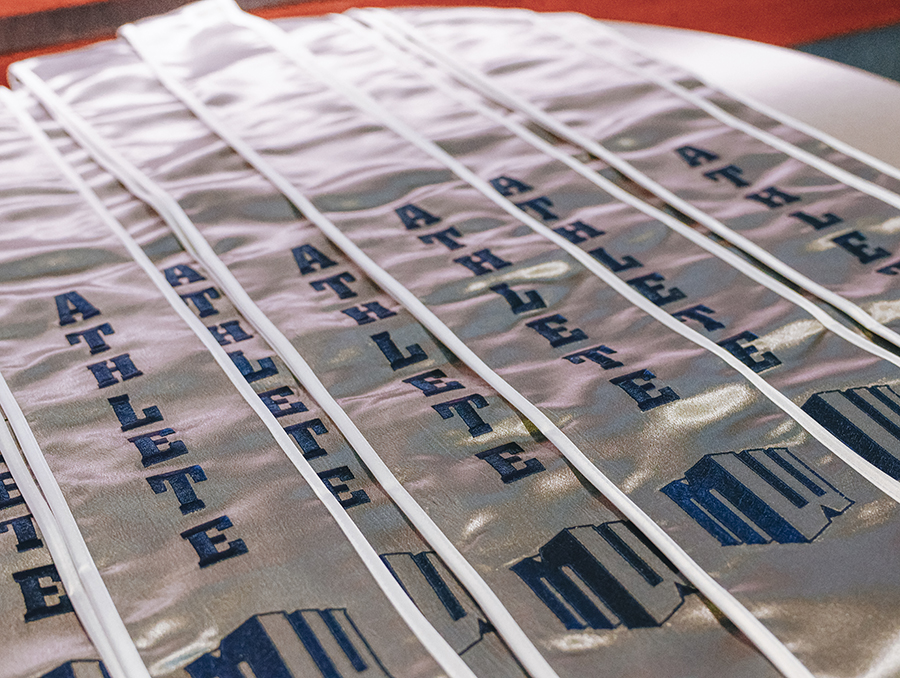“If you want to enter, give it your best. Otherwise, don’t compete.”
Simple words from mechanical engineering associate professor Kwang Kim, but his team of five very unique students took his advice to heart and came out of the 2007 Governor’s Cup $25,000 richer with their plan to develop energy harvesting products.
The Governor’s Cup program is the only statewide awards program in which graduate and undergraduate students compete for cash awards in excess of $110,000. The University’s NanoVation, Inc. took the top prize of $20,000 in the graduate category, and they also won the $5,000 Lt. Governor’s Award in the graduate category for students who best employ clean, renewable or efficient energy technologies and services.
Three members of the team are doctoral candidates, one is a master of science candidate and one is working on her masters in business administration.
“We had it in mind to compete in the Governor’s Cup, but we needed an amazing team and the will to follow it through,” said Kaustav Sinha, who is earning his doctorate developing smart materials based on magnetorheological technology. “Dr. Kim really put it in perspective for us and the result was pretty good.”
Sinha smiled modestly, although he has every reason to shout the team’s accomplishments from a clean energy rooftop. And this summer, he will be working at the Ford Motor Company's global research and product development center in Dearborn, Mich., in alternative technology-related areas.
Rashi Tiwari and Sinha both did their undergraduate studies in India and both received outstanding international graduate student awards this year. She acts as the CEO of NanoVation, Inc., is a doctoral candidate in mechanical engineering and specializes in ionic polymer metal composite (IPMC) research. This technology is also part of her research.
“We think this is the next generation of energy.” Tiwari said. “NanoVation uses vibrations, so it’s green technology, to develop energy harvesting products for reaping otherwise wasted energy. We intend to develop, patent, manufacture and market a line of tiny, self-powered, clean energy harvesters. The prototype design has been developed and tested, and we believe it will be an efficient solution to the current and future energy needs of our clients worldwide.”
The initial product, dubbed the EH series for energy harvesters, is currently meant for the automobile industry and NASA. Not far down the line, the group of five plans to develop it for other transportation industries, the construction industry, the biomedical industry and the wireless communication industry. It will even have military applications, because the product uses vibrations, both above ground and underwater, to provide energy that can be used to re-charge batteries, say for night vision goggles or flashlights. The individual soldier can generate that energy with this device just by walking. This will be useful for pacemakers as well.
“We have such a good blend between business and technology,” Yvonne Dang, the MBA candidate specializing in finance said. Dang’s background includes four years in the financial services industry and four years of international casino marketing. “I’ve helped make sure this product is applicable commercially, environmentally friendly and profitable.”
Both Dang and Tiwari are in the Who's Who among American Universities, 2007 and are vice presidents of the Graduate Student Association.
Sang-Mun Kim is also working on his doctorate in mechanical engineering and has been a researcher for development of thin film materials, including the 3-D electro-magnetic simulation. His experience in the field of smart materials helps on the technical side of overseeing of the product and material development is part of his research as well.
Alex Vanderhoff rounds out the team as vice president of marketing, and will be working for NASA this summer. An Alaska native, she’s also been a member and an officer of the University’s mountain bike racing team and is working on an master of science degree in mechanical engineering. Vanderhoff’s previous work experience involves designing a solar hot water heating system for household use and she’s also working with metal hydrides to develop new types of robotic actuators.
So what will the team do with all this green?
“We agreed to put our winnings back into the company,” Tiwari said. “Dr. Kim knows this field so well and his knowledge has really propelled us down the right path. We don’t want to rush and take a wrong step, so we are being very careful.”
A right step was being asked to present their plan in front of some of the state’s top venture capitalists recently in Las Vegas. Kim is proud of their progress, and when asked about the odds for NanoVation’s success, he is positive but not unrealistic.
“My experience tells me that making a successful company is very challenging. However, under a certain circumstance, with the right people and enough financing, I think the chance is very good.”










